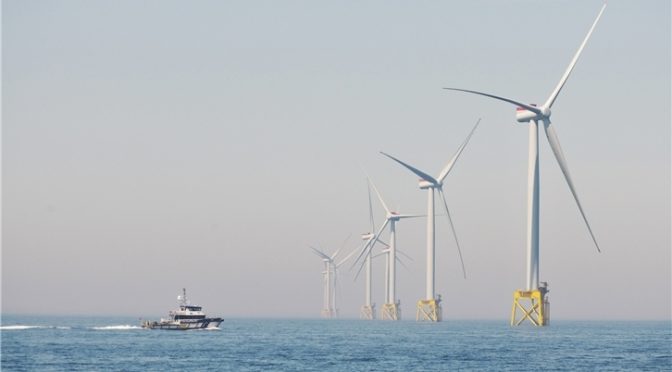Spanish suppliers participated in the project: the substation and the foundations were manufactured by Navantia and Windar, respectively.
The pandemic has not stopped the development of a wind energy project that is an example of green recovery opportunities: the wind power plant produces clean energy to power the equivalent of 630,000 homes after an investment of £2.5 billion and the generation of 3,500 jobs during its construction. Now, 100 qualified professionals are already managing its operation and maintenance.
Iberdrola, through its subsidiary ScottishPower Renewables, has put into operation what is now the largest wind farm in its history and one of the world’s largest of its kind: the East Anglia ONE offshore wind farm in British waters in the North Sea. With an installed capacity of 714 megawatts (MW), the 102 turbines that comprise it are already operational, producing clean energy for 630,000 British homes.
East Anglia ONE started up on schedule despite the complex environment generated by the Covid-19 pandemic. In fact, around 20% of the installation of the turbines was carried out during the lockdown period in the United Kingdom, which forced the company and its professionals to change their working methods: smaller boats were fitted out to reduce the crews as much as possible, spaces were created for professionals to live together to avoid contact with people outside the project and specific health protocols were developed, avoiding changes to the teams.
East Anglia ONE is fully operational, after an investment of £2.5 billion and the generation of 3,500 jobs during its construction. These are in addition to the 100 permanent and skilled jobs generated for the operation and maintenance of the park at the Lowestoft base on the east coast of the United Kingdom, about 200 kilometres from London.
Iberdrola is thus one step ahead towards the energy model of the future. The launch of East Anglia ONE reinforces Iberdrola’s leadership in the development of offshore wind power, of which it has a portfolio of 12,000 MW worldwide, plus 9,000 MW of development options in Sweden.
Spanish technology in the North Sea
This new facility is a new example of green recovery as a driving force for the economy and employment, both locally and for Iberdrola’s collaborating companies in other countries.
Specifically, the Spanish company Navantia has manufactured the park’s substation, which has been christened Andalucía II, at its facilities in Puerto Real (Cádiz). This large infrastructure is responsible for collecting the electricity produced by the wind turbines and transforming the voltage for its transmission to the coast, via two export cables on the seabed, each about 85 kilometres long.
In addition, Navantia Fene, in Galicia, has built 42 jackets or foundations on which the wind turbines are supported, each more than 167 metres high, while the Asturian company Windar built the corresponding piles at its workshops in Avilés (Asturias).
Iberdrola, through ScottishPower Renewables, has also made East Anglia one of the focal points of its training development strategy, involving 3,000 students from across the educational spectrum, with the launch of the subsidiary’s first apprenticeship programme and the collaboration with ten engineering postgraduates at the University of East Anglia.
Moving towards East Anglia HUB, the world's largest offshore wind complex
Following the launch of the East Anglia ONE, Iberdrola now has its sights set on the East Anglia HUB, which is the group’s largest marine project worldwide and comprises three projects with a total capacity of 3,100 MW: East Anglia ONE North, East Anglia TWO and East Anglia THREE.
The development of this large complex, which is scheduled to start in 2022, will require an investment of £6.5 billion, more than €7.6 billion. The three farms will be developed simultaneously and will make Iberdrola one of the leading operators in the UK offshore wind sector.

